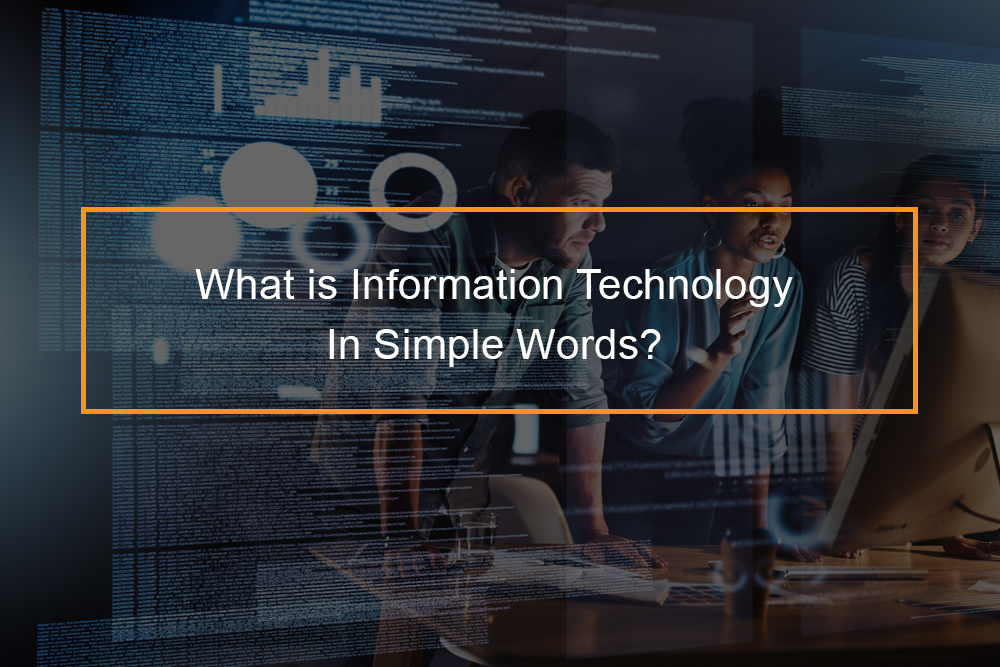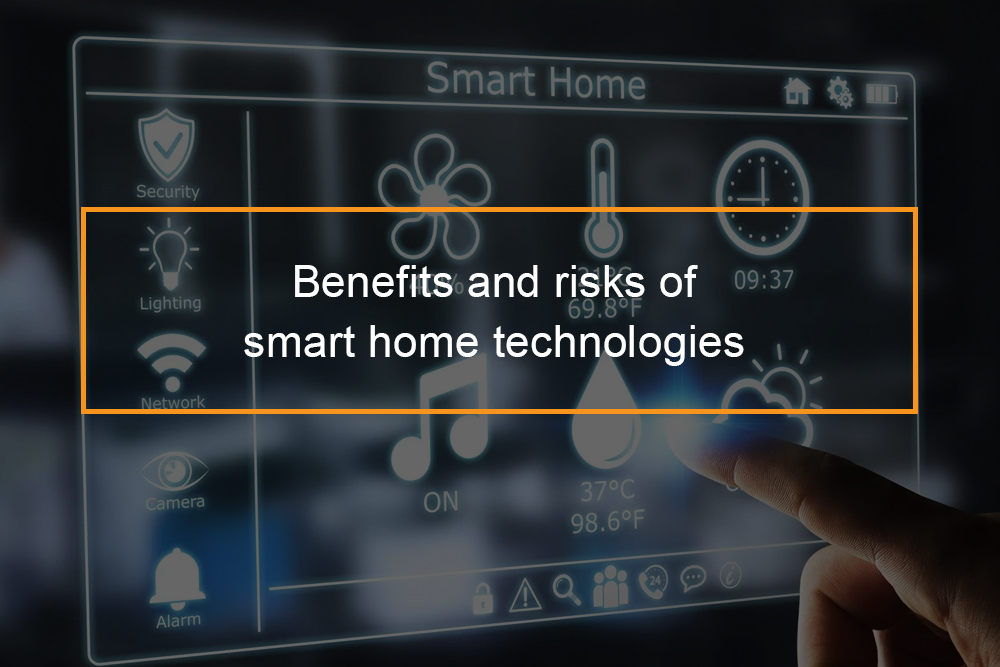
The field of Information technology (IT), encompasses the support, organization, and design of media communications and computer systems. A few positions in this field incorporate programming, network and database administrators, software engineers, system analysts, computer support specialists, and computer scientists. A large portion of the professions in the IT field involve operational and design duties identified with programming applications, systems, and PC equipment hardware. Experts work with organizations to both install and support suitable PC networks that will keep systems dependable and proficient. IT envelops all hardware and software utilized in the creation, both storing and accessing information. Instances of a few advances that IT experts may work with comprise of networks, storage devices, the Internet, firewalls, and databases.
What is Information Technology in Simple Terms?
An Introduction To Information Technology
Information Technology covers anything under computing technology, for example, the Internet, networking software, hardware or workforce that are in this technological field. Most organizations now have IT branches for handling networks, the computers, and any technical tasks involved. IT careers comprise network administration, Web development, technical support, computer programming, computer engineering, to mention a few. Because we live in an “information age,” information technology has become a part of our daily lives, and it is here to stay. Today, IT divisions have duties in zones like:
- PC technical support
- business PC network and database administration
- Project management
- data security
Particularly amid the website blast of the 1990s, Information Technology likewise progressed toward becoming related with parts of computing past those owning IT branches. IT incorporates zones like:
- Programming or software development
- PC systems design
- Project management
- IT Jobs and Careers
IT category incorporates an extensive variety of occupations crosswise over administration, engineering and architecture capacities. Individuals with employment in these territories regularly have professional education in software engineering as well as data systems. They may likewise have related industry certifications. Short courses in IT rudiments can be additionally be discovered on the web and are particularly helpful for the individuals who need to get some introduction to the field before focusing on it as a profession. A career in Information Technology can include working in or driving IT offices, item advancement groups, or research gatherings. Having accomplishment in this activity field requires a blend of both specialized and business abilities.
Issues and Challenges in Information Technology
As computing systems and abilities keep extending around the world, information over-burden has turned into an inexorably primary issue for some IT experts. Proficiently preparing large measures of information to create valuable business insight requires a lot of handling power, advanced programming, and human diagnostic abilities. Cooperation and relational abilities have additionally turned out to be essential for most organizations to deal with the unpredictability of IT systems. Many IT experts are in charge of giving support to business clients who don’t have experience in computer management or other data advancements however who are instead inspired by just utilizing IT as a device to complete their work proficiently. System and network security issues are an essential worry for some business officials, as any security episode can conceivably harm an organization’s notoriety and cost vast totals of cash.
Computer Networking and Information Technology
Since systems assume a focal job in the activity of numerous organizations, business PC networking discussions will, in general, link with Information Technology. Networking trends that play a crucial role in IT include:
Network Capacity and Performance
The prominence of online video has extraordinarily expanded the interest for system data transfer capacity both on the Internet and on IT arranges. New kinds of programming applications that help more extravagant designs and more profound cooperation with PCs additionally will, in general, create more significant measures of information and henceforth arrange traffic. Data innovation groups must make arrangements fittingly for their organization’s present needs as well as this future development.
Mobile and Wireless Utilization
IT network managers should now support an extensive exhibit of cell phones and tablets notwithstanding conventional PCs and workstations. IT situations will, in general, require elite wireless hotspots with wandering capacity. In more prominent places of business, arrangements are cautiously arranged and tried to wipe out dead spots and flag impedance.
Cloud Services
While IT shops in the past kept up their very own server ranches for facilitating email and business databases, some have moved to distributed computing situations where outsider expediting suppliers keep up the information. This adjustment in computing model drastically changes the examples of traffic on an organization arrange. However, it additionally requires noteworthy exertion in preparing workers on this new type of utilization.
What Are The Types of Information Technology?
65 Types of Information Technology
Information technology is a massive industry that includes thousands of popular software packages and services. The following are significant categories or types of information technology. The list is general enough to cover most software and may be utilized as a quick reference to comprehend technology architectures and products. Accounting Packages Accounting functionality such as accounts, accounts payable receivable, bookkeeping, and general ledger. May also involve tools for billing, purchase orders, and inventory.
1. Content Management
It is a category of software that ranges from simple blogging platforms to full-featured enterprise systems with workflow, search, collaboration, digital asset management, media management, and knowledge management features.
2. Cost Control Software
These are software products that offer either operational cost management functions or projects. It is common in a particular industry such as hotel operations or construction projects.
3. Customer Relationship Management
This section is mongst the most widely deployed of all types of software. Customer relationship management is a platform that centers on core sales processes. They may also include support for any customer-facing processes such as marketing and customer service.
4. Data Analysis Tools
They include a category of tools that typically use statistical analysis techniques to model and visualize data to support decision making, research and problem-solving.
5. Data Integration
These are tools that combine data from different sources in real time or on a batch processing basis.
6. Data Mining
These are software for data analysis using large repositories of historical data such as a data warehouse.
7. Decision Algorithms
They include algorithms that automate non-specialist decisions such as carrying out a financial contraction.
8. Decision Support System
Any system that supports either operational decisions or planning often by providing contextual data or visualizations.
9. Design Tools
They include a broad category of technical tools that aid the visual plans, informational or workloads such as software for creating interior design specifications, book layouts or architectural blueprints.
10. E-commerce
Services and platforms that support a business that someone transacts electronically
11. Engineering Software
These include specialized software for fields such as civil, electrical and mechanical engineering.
12. Enterprise Resource Planning
There are large business platforms that incorporate aid for a vast range of activities and processes. It typically provides a unified process framework, data model and toolset that supports information flow between processes. Seen as a solution to the standard business problem of having a large number of disparate systems and methods that are difficult to incorporate.
13. Event Processing
There are technologies that process streams of data to identify actionable operations. When the action is detected, or notification sent.
14. Exchanges
These are services that provide a market for assets, securities or goods.
15. Facility Management
There are software tools for managing facilities such as data centers, office buildings, and schools. May include workflows for standard processes, maintenance management, and capacity utilization functionality.
16. Factory Automation
Some systems orchestrate production lines and control machines to automate or semi-automated production.
17. Financial Management Software
Some software are available for managing assets, investments, accounting or taxes.
18. Gamification Techniques
It includes an application of game design techniques to non-game software. Games are highly engaging. Gamification is an attempt to reproduce comparable levels of engagement for business functions such as marketing and employee productivity.
19. Geospatial
Geospatial is utilizing information about geography and 3d space for applications like business software, navigation systems, engineering, mobile devices, and scientific research.
20. Governance Software
This batch of software falls under corporate governance such as risk management, compliance, auditing, security and knowledge management platforms.
21. Health Software
Health software is an industry that includes business platforms customized for patient record systems, healthcare providers, and technologies utilized directly in treatment and prevention.
22. Incident Management Software
Tools track and prioritize events such as network failures. Advanced technologies in space provide automated root cause examination that can point to a cause when many actions coincide.
23. Information Security
Software that is used to prevent, detect or manage security incidents. Includes foundational technologies such as cryptographic packages that embed into a vast range of software programs.
24. Information Visualization
It is a class of tools that are similar to analytics but with particular strengths at creating images of data that stimulate human cognition.
25. Infrastructure Asset Management
There are platforms for managing public infrastructures such as bridges, canals, roads, electricity and railways grids. It implements processes for controlling the lifecycle of such assets like maintenance, utilization, deployment, and substitution.
26. Infrastructure Management
Tools exist that control devices such as network hardware and PCs from a central platform. For instance, a software fix for a security vulnerability might apply to thousands of machines simultaneously.
27. Inventory Management
Implements processes such as asset tracking, order management, and inventory optimization — a core component of both supply chain management and accounting functions.
28. Knowledge Management
These technologies facilitate the development and effective use of organizational knowledge. It includes general tools such as office productivity, content management, and document management.
29. Legacy Systems
A term for any technology that has aged to the point that it represents an operational risk to a business. There are several reasons that old technology poses a risk including difficulty in finding resources for maintenance and support.
30. Management Accounting Software
It is used to model operational decisions such as production or inventory levels for managers. Management accounting is entirely different from financial accounting and can mean financial modeling of decisions that only consider factors that a particular manager can handle.
31. Marketing Automation
It includes software for core marketing processes and digital marketing such as tools to integrate with ad technology and social media platforms.
32. Mass Customization
Mass customization is a manufacturing process that benefits from economies of scale that allows each unit of production to be tailored. Software in space involves design tools for customers and advanced production automation tools such as robotic control systems.
33. Media Production
These tools produce video, music and other digital media.
34. Office Productivity
They include general purpose office tools for record creation, content management, and communications.
35. Operations Management Program
Any software that’s utilized to automate or manage a company’s core business processes.
36. Payments
Services facilitate payments between parties such as transfers, direct withdrawal, cryptocurrencies, credit cards, prepaid cards, cheques, and cash transactions.
37. Performance Management Software
It is a tool for performance reviews and managing goal setting. Typically offers an audit trail for compliance and liability purposes.
38. Point Of Sale Systems
It is a technology for the cashier and customer service functions of retail locations including payment systems, loyalty card services product scanners. In most instances, the modern point of sales systems integrates with e-commerce jobs. For example, if you can’t find your fit at a shoe store, an assistant might offer to place an order for you via an e-commerce channel.
39. Problem Management
Components support managing and fixing the root cause of incidents often as part of service management or knowledge management platform.
40. Process Automation
General tools orchestrate or choreograph processes such as workflow engines. In many cases, operations are semi-automated and include human tasks such as approval, decisions and customer relationship functions.
41. Process Integration
Integration engines such as an enterprise service bus that provides a publish/subscribe model for events and data. It allows processes to post events to one platform and any means that adhere to the action will appear as a notification.
42. Process Orchestration
A central controller implements processes by invoking sub-processes, routines, and notifications at the right time with the correct data.
43. Procurement Software
Procurement actions need a great deal of oversight to prevent fraud and any failures that can be costly and have compliance cases. Therefore, it is common for companies to adopt procurement programs that implement severe activities, audit trail functions and reporting.
44. Project Management Tools
Project management functionality such as planning, estimation, resource allocation, scheduling, cost control, budget management, and project reporting.
45. Reporting Tools
It includes any technology that’s used to create reports including data extraction, transformation, analysis and visualization tools.
46. Reputation Systems
These are algorithms or customer feedback mechanisms that rate and rank the reputations of businesses or other entities.
47. Risk Management Software
Software implements control, analysis processes or risk governance. It is often specific to a type of risk or a particular industry.
48. Robotics
Robots are a class of automated machines that have advanced features such as sensory perception or artificial intelligence.
49. Safety Management
Safety-related functions such as processes to prevent accidents and compliance reporting.
50. Sales Force Automation
Support for processes such as prospecting, opportunity management, order management, call management, account management, territory management, forecasting, and sales reporting.
51. Scientific Computing
It involves the collection and management of scientific data. Also includes modeling, analysis, computational support applications and simulation for scientific research.
55. Search Applications
Search provides a query interface to vast reservoirs of information such as the web. Search services may provide advanced platforms including the ability to understand the semantic meaning of a question phrased in natural language.
56. Self Service
Interfaces allow a customer to order and manage products and services directly, often replacing traditional customer service functions.
57. Service Automation
It includes automation of service management functions such as service design, service delivery, and service operation.
58. Service Delivery
Under this field, there’s automation and semi-automation of the day-to-day operation of service including service level management, capacity management, and availability management.
59. Service Desk
Help desk software provides the functions, information, and processes required to provide customer service. It may include facilities for internal clients. In most instances, service desk apparatuses are highly integrated and provide a single view of jobs such as customer relationship management, service management, and billing.
60. Simulators
It includes simulation of the real world or theoretical situations, environments and phenomena for applications including training, testing, and research.
61. Statistical Analysis
It involves the application of stats to accumulations of data.
62. Supplier Management Software
It is software to manage supplier relationships and related operational, financial, legal, compliance and risk management processes.
63. Supply Chain Management Software
Software manages the flow of goods and services from the start to end customers. In various industries, supply chain actions are the center of improvement and optimization efforts. Consequently, supply chain management software is often highly integrated and sometimes appears as the backbone of an organization’s technology platform.
64. Transaction Processing
Services perform transactions. Transactions or trades are a fundamental type of business exchange that translates to a series of operations that succeed or fail together. It is critical to commerce as it’s often unacceptable for financial transfers and other business operations to partially achieve — transaction processing warrants either success or failure with nothing in-between.
65. Virtual Reality
Simulation focused on the human perception that often extends beyond real-world environments into the imagination for applications such as entertainment and games.
Importance of Information Technology
Importance of Information Technology in Different Sectors
Importance of Information Technology in Management
- IT has a significant presence in the management of various companies. It aids the managers in adapting to the new business processes, and also for predicting the possible impacts of more modern technologies.
- The managers can benefit from efficiently prepared computer packages and electronically stored discrete information. Using just one mouse click, they can have the essential information in front of their display.
- To take care of these software programs in a better way, the administrators have to go through quality training in the utilization of information technology. Therefore, many corporate organizations can be seen taking individual efforts for the improvement of these skills, through training programs prepared by experienced software professionals.
Why is Information Technology Important in Business?
- IT today is vital in making sure the smooth functioning of all the sectors in an organization, such as the human resource department, finance department, manufacturing department and in security-related purposes.
- Numerous different businesses need technical software-packages for attaining functional as well as operational requirements. The leading companies sign deals with the programs manufacturing organizations to buy their products along with their annual updates. Some even get appropriate software meant for their individual needs.
- The production and manufacturing companies, such as those in the automobile sector, use IT and software products to get rid of any mistakes, in the proper functioning of the tools used for manufacturing and designing purposes. Moreover, thanks to the developments in the information technology sector, these companies can keep themselves aware of the changes in the global markets.
- The hardware devices and software applications are the main components needed for the utilization of information technology. Internet browsers, the operating systems, ERP’s and particular purpose applications are the software which applies in information technology.
- IT plays an essential role in efficiently solving the mathematical problems especially in engineering and in the project management system. It has excellent use in the automated production of sensitive information, up-gradation of the critical business processes, and streamlining of the numerous business activities. It plays an essential task in the parts of communication and automated administration of entire systems.
Importance of Information Technology in Education
- Information Technology assists the students as well as the teachers in studying the course material efficiently, by enabling faster access to information from all over the world, on some different topics.
- Studying the subjects with the help of online libraries and dictionaries have made grasping and learning more manageable for the students. The involvement of information technology in the school syllabus, colleges, and universities, has helped them in understanding their subjects well and getting their fundamentals cleared.
- The online grading system, utilized by numerous learning institutions, is an advantage for the parents, as it assists them to keep track of their children’s performances and progress. IT-based communication systems like emails, SMS, and so many others, can also avail the particulars of the performance record of the children to their parents.
- Applications of the IT sector nowadays, are visible in numerous different industries, ranging from educational, industrial to managerial. With more recent innovations and developments happening every day, the IT sector is expected to grow at a faster pace in the future, therefore creating ample chances for deserving candidates, improving the different procedures, and further enriching our lives.









